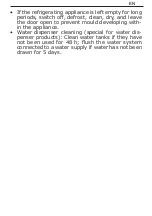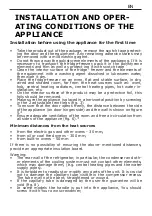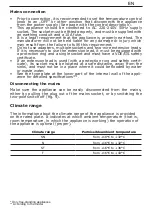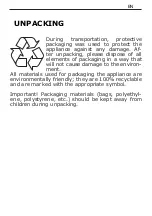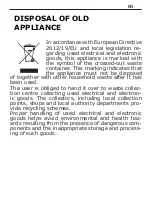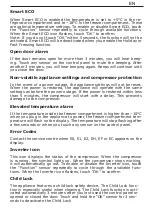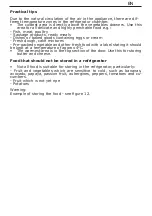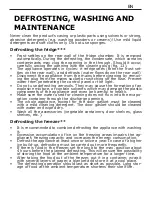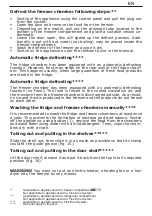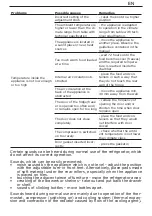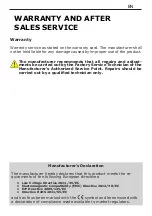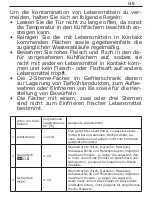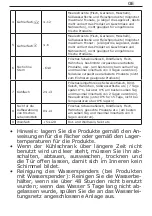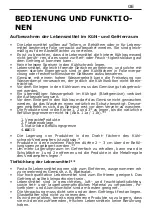
Problems
Possible causes
Remedies
Temperature inside the
appliance is not low enough
or too high
Incorrect setting of the
adjustment knob
- reset the knob to a higher
position
The ambient temperature is
higher or lower than the cli-
mate range from table with
technical specification
- the appliance is adapted
to operation in the climate
range from table with tech-
nical specification.
The appliance is located in
a sunlit place or near heat
sources
- move the appliance to
another place. Observe the
guidelines contained in the
manual
Too much warm food loaded
at a time
- wait 72 hours until the
food becomes cool (freezes)
and the required tempera-
ture is reached inside the
chamber
Internal air circulation ob-
structed
- place the food and con-
tainers in such a way that
they do not touch the rear
wall of the fridge
The air circulation at the
back of the appliance is
obstructed
- move the appliance min.
30 mm away from the wall
The door of the fridge/freez-
er is opened too often and/
or remains open for too long
- reduce the frequency of
opening the door and/or
shorten the time when door
remains open
The door does not close
completely
- place the food and con-
tainers so that they would
not interfere with door
closed
The compressor is switched
on too rarely
- check whether the ambi-
ent temperature is not lower
than climate class
Door gasket inserted incor-
rectly
- press the gasket in
Certain sounds can be heard during normal use of the refrigerator, which
do not affect its correct operation.
Sounds, which can be easily prevented:
• noise caused by the appliance which is not level - adjust the position
with the adjustable turn-in front feet. Alternatively, place pads made
of soft material under the rear rollers, especially when the appliance
is placed on tiles.
• touching the adjacent piece of furniture - move the refrigerator away.
• creaking of the drawers or shelves - take out and put back the drawer
or shelf.
• sounds of clinking bottles - move bottles apart.
Sounds heard during normal use are mainly due to operation of the ther-
mostat, compressor (switching on) and cooling system (thermal expan
-
sion and contraction of the radiator caused by flow of the cooling agent).
EN

